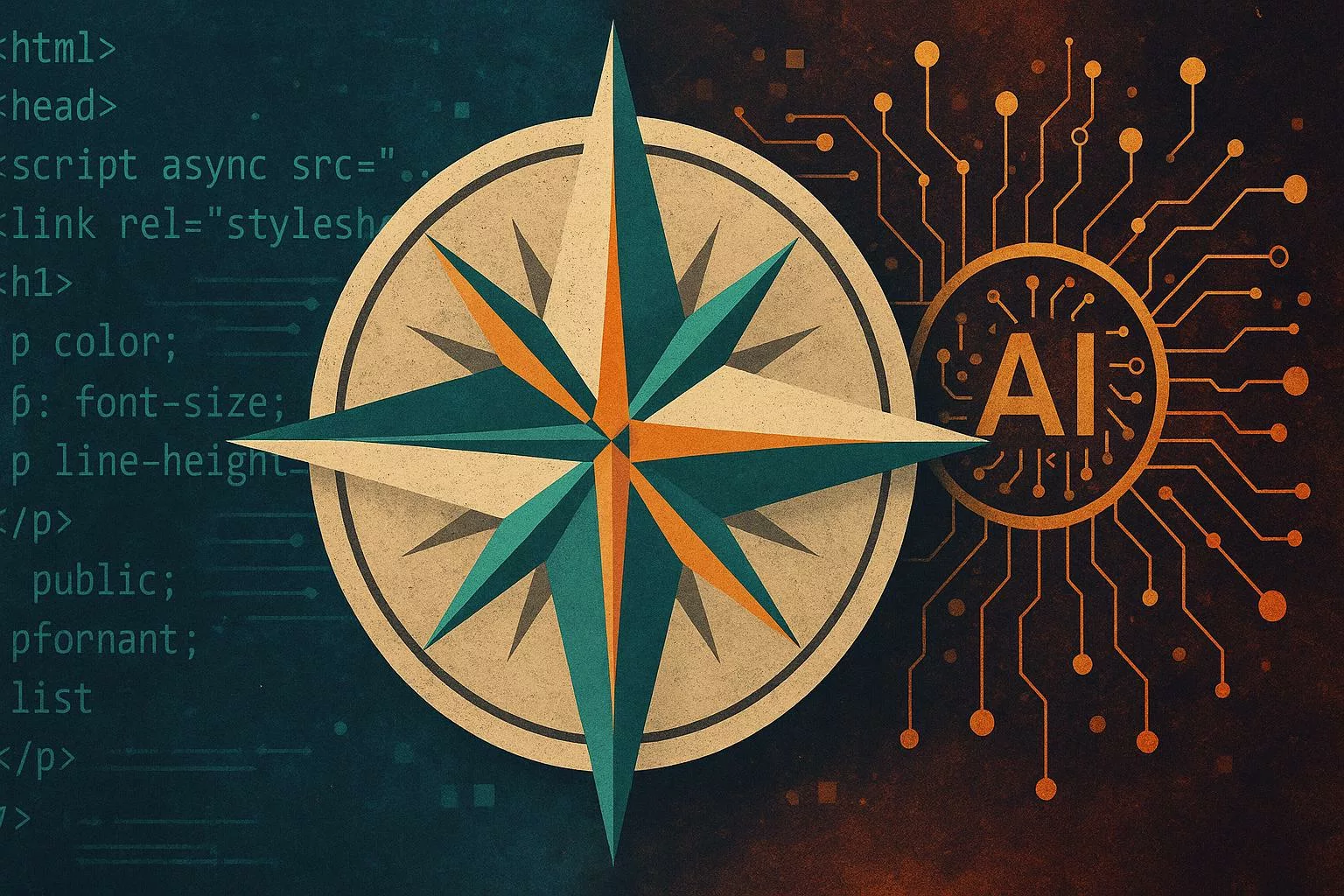A question I get asked all the time, usually at conferences or on snowy walks with fellow developers in Vancouver, is this: “Aren’t you worried AI will make us obsolete?” Honestly, it isn’t a question I ever thought I’d be answering back when responsive design was the big buzzword and our biggest challenge was convincing a client that Comic Sans wasn’t worth fighting for.
But here we are, 2025 just around the corner, and I find myself staring at GitHub Copilot’s suggestions with a weird mix of admiration and unease. Two years ago, I saw a junior developer on my team build a polished landing page in one afternoon. All she used were Figma files, a no-code stack, and some scarily good AI design tools. My first gut reaction was panic. Am I being replaced by a generation that doesn’t even need to write JavaScript? The answer is far more nuanced than I imagined.
The Anatomy of My Misstep: Underestimating AI’s Creative Muscle
Looking back, I realize the real mistake wasn’t being afraid of automation. It was thinking that automation was only about efficiency and saving time on repetitive tasks. What I didn’t anticipate was how these AI tools would fundamentally shift what my job even is.
We used to spend a whole dev sprint writing menus and tweaking CSS flexbox layouts. Now, tools like GitHub Copilot and Tabnine do more than fill in the blanks. They remind me of patterns I may have forgotten and catch mistakes before I know I’ve made them. With those tasks out of the way, I get to focus on the big stuff like architecture, accessibility, and the actual story of the product. Automation isn’t replacing me. It’s giving me the room to act like an architect instead of a code monkey.
But here’s the twist. The real shift isn’t only in how we build things. It’s in what we build for people to use.
Personalization as a Baseline, Not a Perk
Let’s talk user experience. I used to think personalization was saying hello with your name after you logged in. Now, that’s just the starting point. AI-driven websites change layout, content, and even tone in real time. I worked on an e-commerce platform this year that used AI content engines like WordLift. The homepage looked completely different depending on whether you clicked in from Instagram, a Google search, or a partner’s blog. Not just a different hero image, but a completely new pitch. And yes, the bounce rates improved.
That leads me to wonder, how personal can the web get without becoming unsettling? Right now, people want this living, responsive experience. Still, I’m constantly thinking about the line between helpful and creepy, and to be honest, it moves every day.
Smart search, personalized recommendations, and real-time changes to the UI are already here. If you’re not paying attention to behavioral data to guide content and structure, you can bet that your competition is.
The New Builders: From Gatekeeping to Open Doors
Here’s a phrase I never thought I’d say. I now suggest no-code and low-code tools to people who’ve never written a single loop. The skills that used to put developers on one side and everyone else on the other—like command line tricks or building an API from scratch—are no longer walls. AI and visual platforms have made everything more about what you want to build, not how you build it.
Am I worried about this? Not much. Sure, complex systems still need someone experienced to oversee them. But a wave of creativity is coming from non-traditional developers: educators, small business owners, and students. It reminds me why I love this medium in the first place. And hey, if you’re Canadian like me, rooting for the underdog just comes naturally.
When the Web Stops Being Flat
Our last project took me somewhere I never would’ve imagined even five years ago. I worked with 3D product demos using browser-based AR. I used to think this tech only belonged to gamers or experimental design studios. Now, thanks to better frameworks and AI tools, it’s surprisingly easy to work with.
Voice interfaces are also becoming essential. I watched someone who can’t use a mouse navigate an entire retail site using only their voice. We made it possible using some smart natural language processing. That moment stuck with me and reminded me that accessibility isn’t just a checklist. It is the reason we build.
Of course, more complexity also means more risk. The same AI that patches bugs in seconds can also be used to find flaws you didn’t know existed. I now spend about as much time on cybersecurity as I do crafting seamless user experiences. You need to keep it fast—Core Web Vitals still matter—and locked down.
Looking Forward: What’s Our Job Now?
Where does that leave someone like me—and maybe you?
Our roles are evolving, not disappearing. Think of yourself now as a conductor, not the one laying every single brick. The most important work is in areas like strategy, user journeys, ethics, and helping others get the most out of AI-powered tools.
Here’s my challenge to you: Stop holding tight to the parts of your job you weren’t crazy about anyway. Focus on what humans still do better than machines—telling stories, connecting systems, really listening to people. Welcome new builders into the fold. Stay curious. Explore all the AI tools you can. But don’t lose sight of your instincts. Now more than ever, your judgment matters.
I’m still working out where to draw the next lines. How do we balance privacy and personalization? Can we keep our humanity shining through the noise? I won’t pretend to have all the solutions. But I do believe this: the future of web development won’t be man against machine. It will be about the world we build together.
If you’re facing the same questions or building something bold in this messy AI era, let’s talk. Let’s keep the web human, even when the robots are watching.
